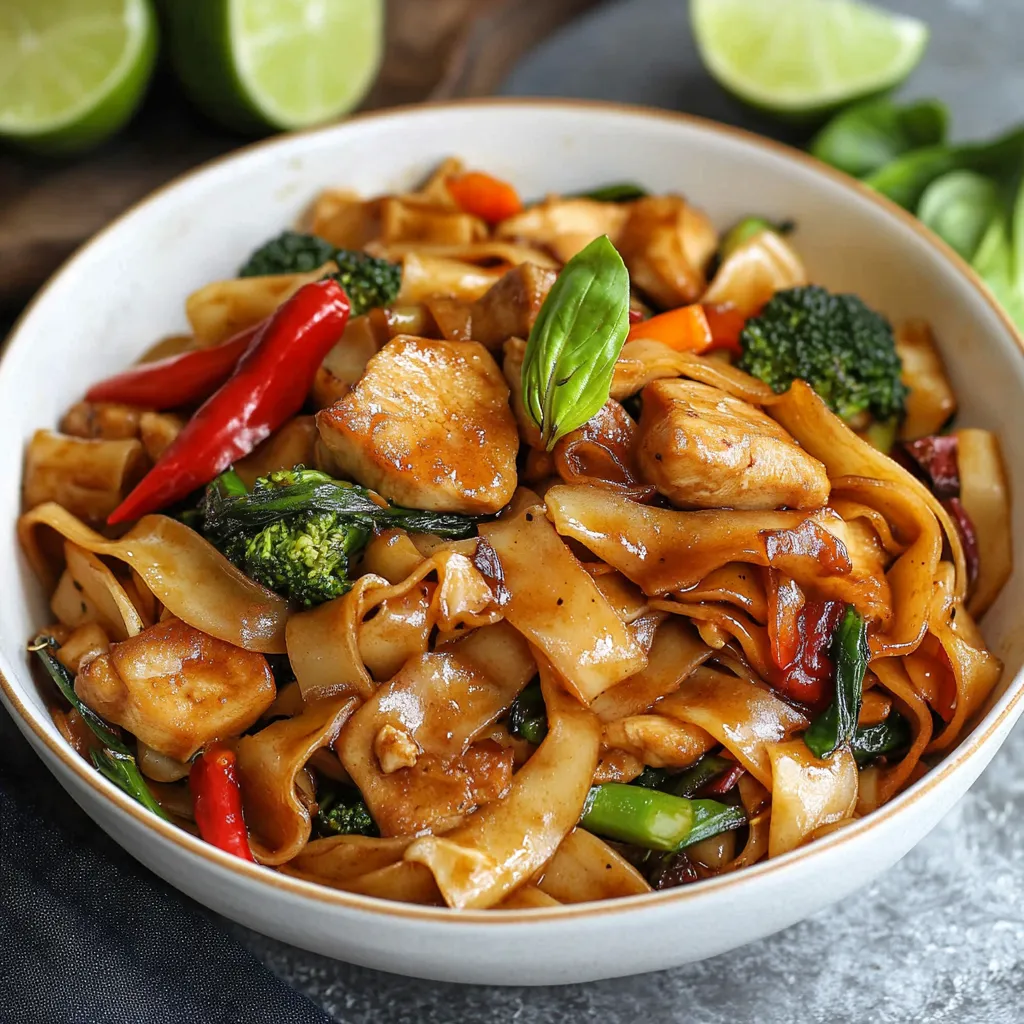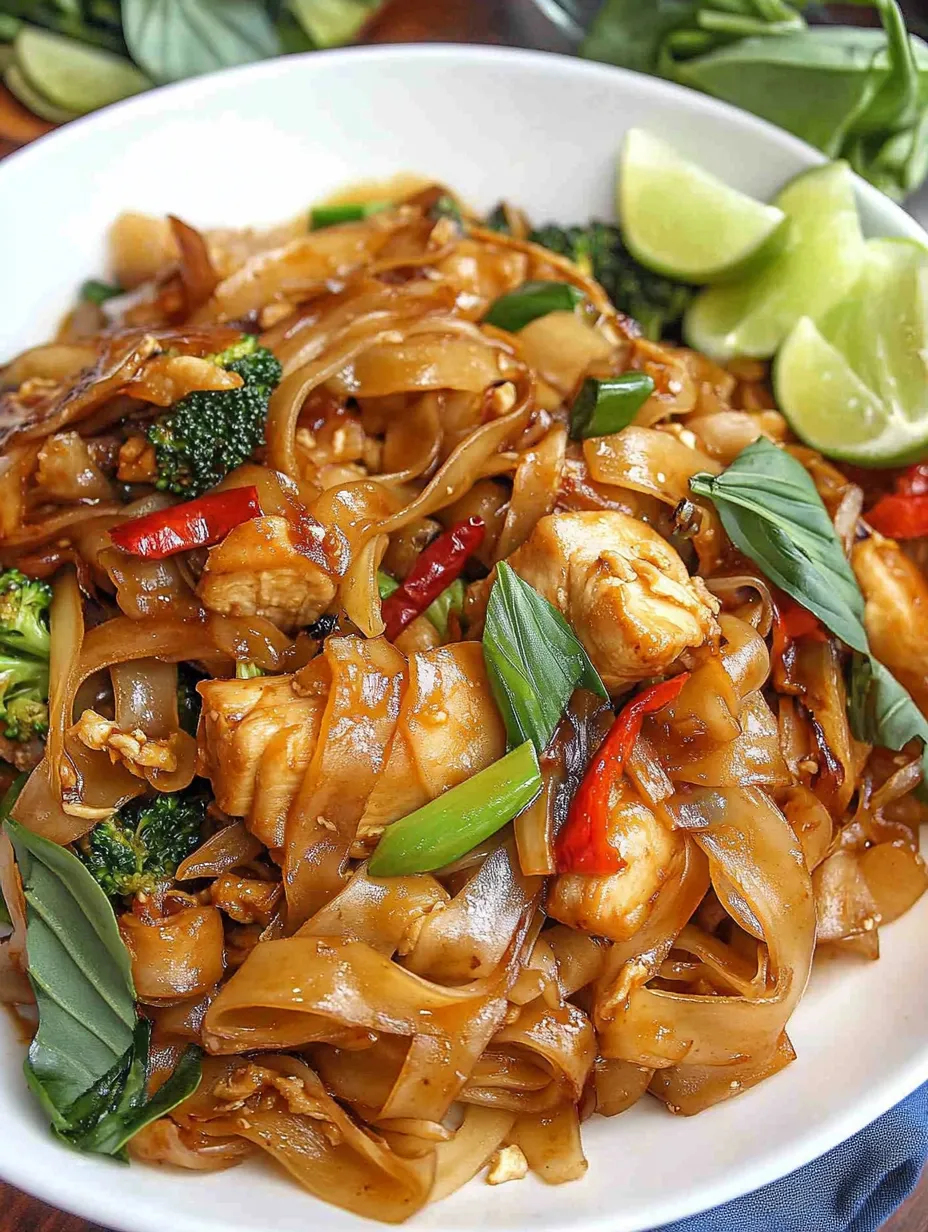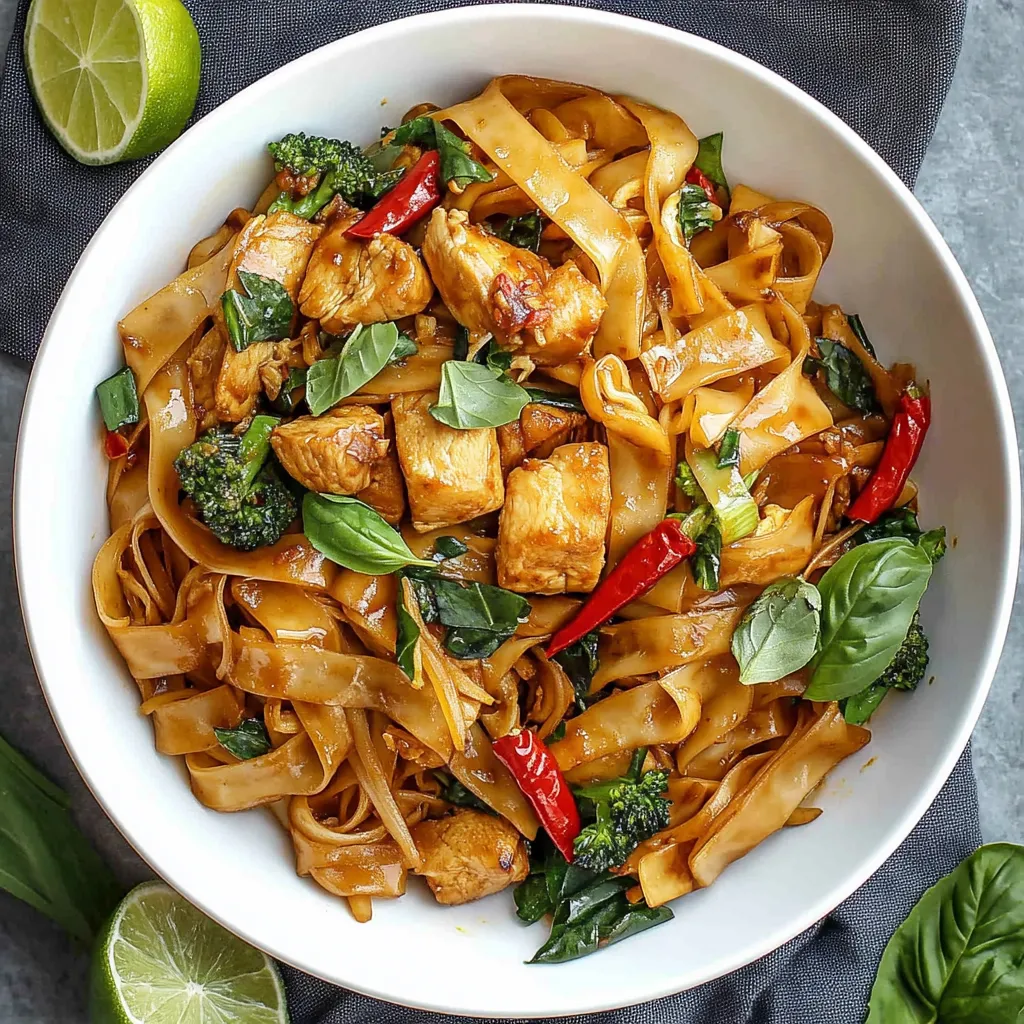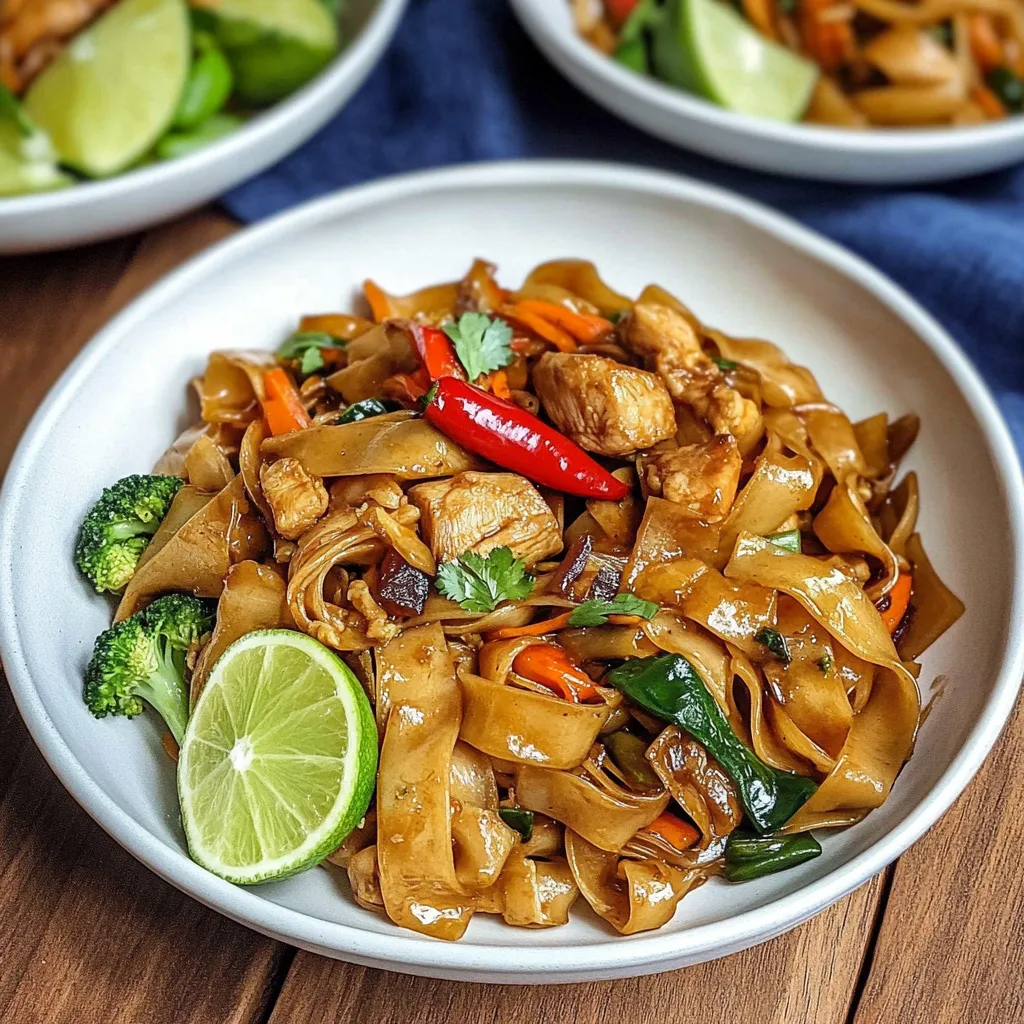 Pin it
Pin it
These Thai Drunken Noodles hit just the right mix of sweet, hot, and umami flavors. Wide rice noodles get tossed at super high heat with juicy chicken and fresh veggies, giving you that smoky "wok hei" taste that makes you think you're eating at your favorite Thai spot.
I've spent so much time getting this dish just right using both woks and regular pans. The big secret? Getting everything ready beforehand and keeping that heat cranked up the whole time you're cooking.
Key Components
- Wide Rice Noodles: Go for fresh or dried (soak dried ones in warm water for 20-30 minutes)
- Chicken Thighs: Chop into bite-sized 1-inch chunks
- Thai Basil: You can use normal basil in a pinch but it won't taste the same
- Thai Bird Chilies: Begin with 2-3 if you want medium heat
- Fresh Garlic: Chop it right before you start cooking
- Good Oyster Sauce: This gives the deep savory backbone
Step-By-Step Guide
- 1. Noodle Preparation:
- Getting the noodles right is super important. For dried ones, let them sit in warm water for 20-30 minutes until they bend easily but still have some firmness. If you've got fresh noodles, just give them a quick cold water rinse. Make sure to drain them well and toss with a tiny bit of oil so they don't clump up. Never cook them in boiling water - they'll finish cooking in the pan later.
- 2. Protein Preparation:
- Cut your chicken thighs into even 1-inch pieces so they cook at the same rate. Add a bit of white pepper and salt. Let the meat sit out for about 15 minutes before cooking - cold meat will cool down your pan too much. If you want to swap in shrimp or tofu, just change your timing (shrimp needs 2-3 minutes, tofu takes 3-4 minutes per side).
- 3. Sauce Mixing:
- Mix together your oyster sauce with both dark and light soy sauce. The dark soy makes everything look nice and gives depth, while light soy brings the salt. Add fish sauce bit by bit and taste as you go - you can always add more but can't take it away. Your sauce should taste a little stronger than you want since it'll get less intense during cooking.
- 4. Vegetable Preparation:
- Cut up all your veggies before you turn on the heat. Slice onions into thin wedges, cut bell peppers into chunks, and break broccoli into small pieces. Lightly smash the Thai chilies to let their heat out. Keep your garlic and chilies separate since they go in first. Having everything ready and within reach makes stir-frying so much easier.
- 5. Wok Heating:
- Whether you're using a wok or big frying pan, getting it hot enough matters a ton. Heat until a water droplet sizzles away instantly - about 1-2 minutes on high. Add your oil and swirl it around. The oil should shimmer but not start smoking. With a regular pan, you might need to cook smaller amounts at a time to keep the temperature up. Don't rush - getting that proper heat gives you the amazing wok flavor.
- 6. Cooking Process:
- Start with the flavor builders - toss garlic and chilies into the hot oil, stirring all the time so they don't burn. Put chicken in one layer and let it brown before you mix it. You should hear sizzling - that means your pan is hot enough. Cook your veggies based on how hard they are: onions first, then peppers, and finally any leafy greens. Keep everything moving around the pan.
- 7. Noodle Integration:
- Add your drained noodles in small batches, tossing quickly so they don't stick. Pour your sauce around the sides of the pan so it caramelizes a bit before mixing. Your noodles should get some charred spots - that's where the real flavor comes from. If your pan looks too full, cook in batches.
- 8. Final Seasoning:
- Add Thai basil at the very end, just long enough to wilt it. The hot noodles will bring out its flavor. Taste your dish and make any last adjustments - more fish sauce if it needs salt, a bit of sugar for sweetness, or extra chili for heat. A perfect plate of drunken noodles has all four Thai flavor notes: salty, sweet, sour, and spicy.
 Pin it
Pin it
Keeping Leftovers
Keep any extra portions in a sealed container for up to 3 days. When you warm them up, add a tiny splash of water or chicken stock to bring back moisture. Always reheat in a hot pan - using the microwave will make your noodles turn mushy.
 Pin it
Pin it
Controlling Your Heat
Getting the heat just right throughout cooking makes all the difference for amazing drunken noodles. Begin with high heat for that initial sear, but be ready to adjust as you go. Watch what's happening in the pan - your food should be sizzling energetically but not burning. If you see too much smoke or things starting to burn, lower the heat a bit or lift the wok off the burner briefly. You want to keep a steady high temperature that gives char without burning. Each stove puts out different heat levels, so get familiar with yours and make changes as needed.
The Story Behind The Dish
Pad Kee Mao, which literally means "Drunken Noodles," has an interesting place in Thai food culture. Despite its name, there's no booze in it - people say it's either the perfect late-night food after drinking, or that the crazy amount of chilies makes you feel tipsy from the heat. In Thailand, street food vendors cook this over blazing flames, creating that special charred taste that's hard to copy at home. Knowing this background helps you understand why high heat and bold seasonings matter so much for getting the real deal taste.
 Pin it
Pin it
Closing Thoughts
This dish really captures what makes Thai street food so good - big flavors, different textures, and that incredible wok-fired taste. Whether you're cooking for your family or just working on your stir-fry game, these drunken noodles are both fun to make and amazing to eat.
Frequently Asked Questions
- → Why's it called drunken noodles?
- It’s got nothing to do with alcohol! People say it’s great after a long night out or because the heat makes you feel tipsy.
- → Can I make this vegetarian?
- Definitely! Swap the chicken for tofu or mushrooms, and go with vegetarian oyster sauce.
- → What if I don’t have Thai basil?
- Regular basil works, but you’ll lose some of that peppery kick. A tiny dash of black pepper can make up for it.
- → Is this dish really spicy?
- It can be! Tone it down by skipping the Thai chilies or using less.
- → Can I prep things ahead of time?
- Sure! Chop your veggies and mix the sauce a day early, but cook the noodles closer to meal time.
